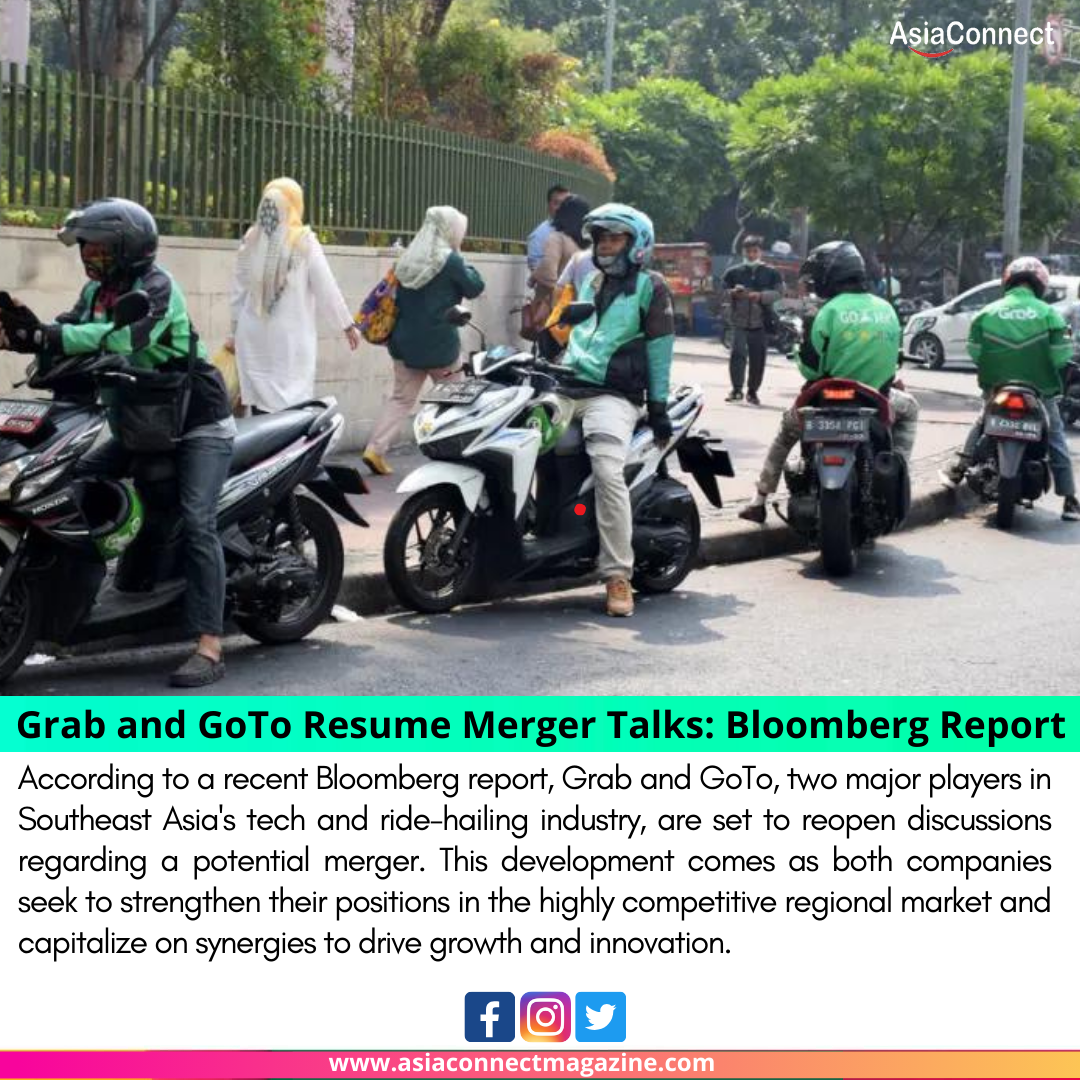According to a recent Bloomberg report, Grab and GoTo, two major players in Southeast Asia’s tech and ride-hailing industry, are set to reopen discussions regarding a potential merger. This development comes as both companies seek to strengthen their positions in the highly competitive regional market and capitalize on synergies to drive growth and innovation.
The decision to resume merger talks reflects the evolving landscape of Southeast Asia’s digital economy, where consolidation and strategic partnerships are becoming increasingly prevalent. By joining forces, Grab and GoTo aim to create a dominant player capable of offering a comprehensive range of services, including ride-hailing, food delivery, digital payments, and more.
Grab, headquartered in Singapore, has established itself as a leading super-app in the region, offering a wide array of services to millions of users across multiple countries. From ride-hailing and food delivery to financial services and digital entertainment, Grab has diversified its offerings to become a one-stop platform for consumers’ everyday needs.
Similarly, GoTo, formerly known as Gojek, is a prominent player in Indonesia’s tech ecosystem, offering a range of services such as ride-hailing, food delivery, and digital payments. With a strong presence in its home market and ambitions to expand regionally, GoTo brings valuable assets and expertise to the table in any potential merger with Grab.
The resumption of merger discussions between Grab and GoTo underscores the strategic imperative for consolidation in Southeast Asia’s tech industry. As competition intensifies and regulatory scrutiny increases, companies are looking to leverage scale and synergies to stay ahead in a rapidly evolving market.
A potential merger between Grab and GoTo could unlock significant benefits for both companies and their stakeholders. By combining their resources, technology platforms, and user bases, the merged entity could achieve economies of scale, enhance operational efficiency, and accelerate innovation across various business verticals.
Moreover, a unified platform spanning multiple countries in Southeast Asia would provide consumers with greater choice, convenience, and seamless experiences. From booking rides and ordering food to making digital payments and accessing financial services, users would benefit from a more integrated and holistic ecosystem.
The resumption of merger talks between Grab and GoTo is likely to attract attention from investors, regulators, and industry observers alike. While the potential synergies and benefits of a merger are significant, there are also challenges and complexities that need to be carefully navigated, including regulatory approvals, integration of technology platforms, and alignment of corporate cultures.
Nevertheless, both Grab and GoTo have demonstrated their resilience and adaptability in navigating the competitive landscape of Southeast Asia’s tech industry. With a shared vision for the future of mobility, digital commerce, and financial services in the region, the two companies are well-positioned to explore opportunities for collaboration and growth.
In conclusion, the decision by Grab and GoTo to resume merger discussions signals a pivotal moment in the evolution of Southeast Asia’s tech ecosystem. As they seek to navigate the challenges and opportunities of a rapidly changing market, collaboration and consolidation could pave the way for greater innovation, efficiency, and value creation for stakeholders across the region.





